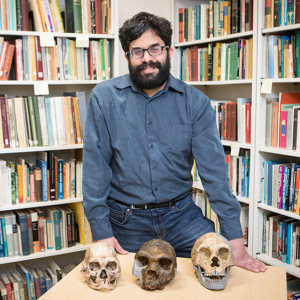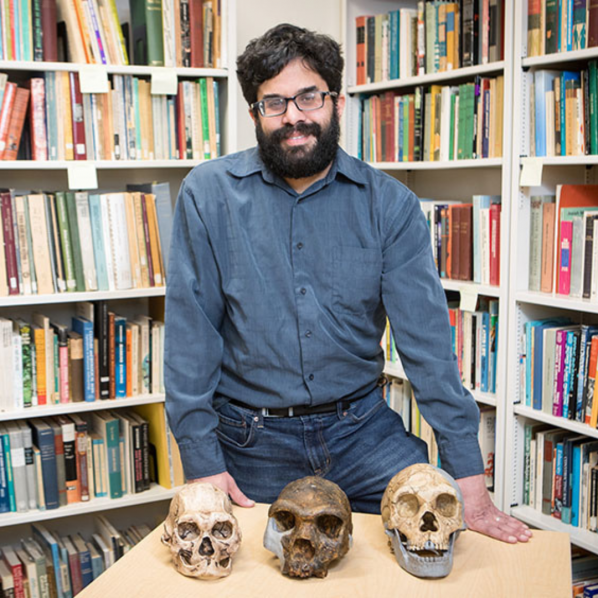WASHINGTON, D.C. — In their search to understand human origins, National Geographic Explorer in Residence and world-renowned paleoanthropologist Lee Berger and his team unearthed new evidence in the Rising Star cave system in South Africa suggesting Homo naledi — an extinct hominin species — buried their dead and used symbols for meaning-making, both behaviors that were thought to be exclusive to large-brained hominins. These findings could be some of the earliest examples of mortuary practices and meaning-making by a small-brained hominin, thus altering our understanding of human evolution. Scientific papers on the burials, symbols, and interpretation of the findings have been accepted and will be published in eLife. They are currently available in preprint via BioRxiv:
"Burials and Engravings in a Small-Brained Hominin, Homo naledi, from the Late Pleistocene: Contexts and Evolutionary Implications" - biorxiv.org/content/10.1101/2023.06.01.543135v1
"Evidence for Deliberate Burial of the Dead by Homo naledi" - biorxiv.org/content/10.1101/2023.06.01.543127v1
Funded by the National Geographic Society, Berger and his team — including Dr. Marc Kissel, assistant professor in the Appalachian State University Department of Anthropology — identified depressions deep in the chambers of the Rising Star cave system. Bodies of H. naledi adults and several children estimated to be younger than 13 years of age were deposited in fetal positions, which suggests intentional burial of the dead.
The interments predate the earliest known Homo sapiens burials by at least 100,000 years, making the Rising Star burials some of the most ancient in the hominin record and indicating that burials might not have been limited to H. sapiens or other hominins with larger brain sizes.
“This work helps push back on narratives that there is a moment in time that we became human. Rather, becoming human is a process that happened throughout our evolutionary history. There is no signal moment. Hopefully this work sheds light on the importance of rethinking past models of human evolution.” - Dr. Marc Kissel, assistant professor in the Appalachian State University Department of Anthropology
Additionally, the team found engraved symbols on the cave walls, which could be 241,000 to 335,000 years old and will be further tested. These symbols, which include deeply impressed cross-hatchings and other geometric shapes, were found on surfaces that appeared to have been prepared and smoothed. The lines appeared to have been made repeatedly by carefully passing a pointed or sharp tool through the grooves. The creation of similar symbols has also been documented in Neanderthals (Homo neanderthalensis) from almost 60,000 years ago and early Homo sapiens in South Africa from about 80,000 years ago. Such intentional designs, which are widely interpreted as signifying, recording, and transmitting information in a durable manner, are recognized as a major cognitive step in human evolution.
“These recent findings suggest intentional burials, the use of symbols, and meaning-making activities by Homo naledi. It seems an inevitable conclusion that in combination they indicate that this small-brained species of ancient human relatives was performing complex practices related to death,” said Berger. “That would mean not only are humans not unique in the development of symbolic practices, but may not have even invented such behaviors.”
The Rising Star cave system has become one of the most fruitful sites for hominin fossils in the world. The new findings by Berger and team add a new chapter to what we know about the human origin story.
Kissel explained the importance of the study, saying, “Anthropologists used to argue that only Homo sapiens were able to create objects that have meanings embedded in them. For example, we all agree that a red light means to stop because that is the convention we have come to agree upon. But connecting signs to concepts is something we don’t really see in nonhuman primates. This ability, called symbolic thought, was seen as one of the major transitions in human evolution and assumed to require a large brain. But here we have a human ancestor that, while it may have lived around the same time as Homo sapiens, had a brain size 50-60% the size of ours. Yet Homo naleidi seems to have engraved on a wall and engaged in mortuary behaviors. This implies they had particularly strong social and emotional bonds and shared understanding of meaning, a very human-like way of living."
Kissel graduated with his Ph.D. in Anthropology from the University of Wisconsin-Madison. Following a position as a postdoctoral researcher at the University of Notre Dame, Kissel joined the App State Department of Anthropology in 2017. "My interests are about how our ancestors became human," said Kissel, who studies the origins of symbolic thought, the beginning of peacefare and warfare, and how modern evolutionary theory can lead to better understanding of the the processes of becoming human.
When asked about his role in this study, Kissel explained, "My role was to think about what it means that Homo naledi were engaged in mortuary behaviors like burying their dead and engraving on the walls, what other data exists that shows that smaller-brained hominins were doing relevant behaviors, and how that affects the larger issues of what it means to be human."
Read more about these findings at nationalgeographic.com/premium/article/lee-berger-cave-of-bones.
###
About the Department of Anthropology
The Department of Anthropology offers a comparative and holistic approach to the study of the human experience. The anthropological perspective provides a broad understanding of the origins as well as the meaning of physical and cultural diversity in the world — past, present and future. Learn more at https://anthro.appstate.edu.
About National Geographic Society
The National Geographic Society is a global nonprofit organization that uses the power of science, exploration, education and storytelling to illuminate and protect the wonder of our world. Since 1888, National Geographic has pushed the boundaries of exploration, investing in bold people and transformative ideas, providing more than 15,000 grants for work across all seven continents, reaching 3 million students each year through education offerings, and engaging audiences around the globe through signature experiences, stories and content. To learn more, visit www.nationalgeographic.org or follow us on Instagram, Twitter and Facebook.

